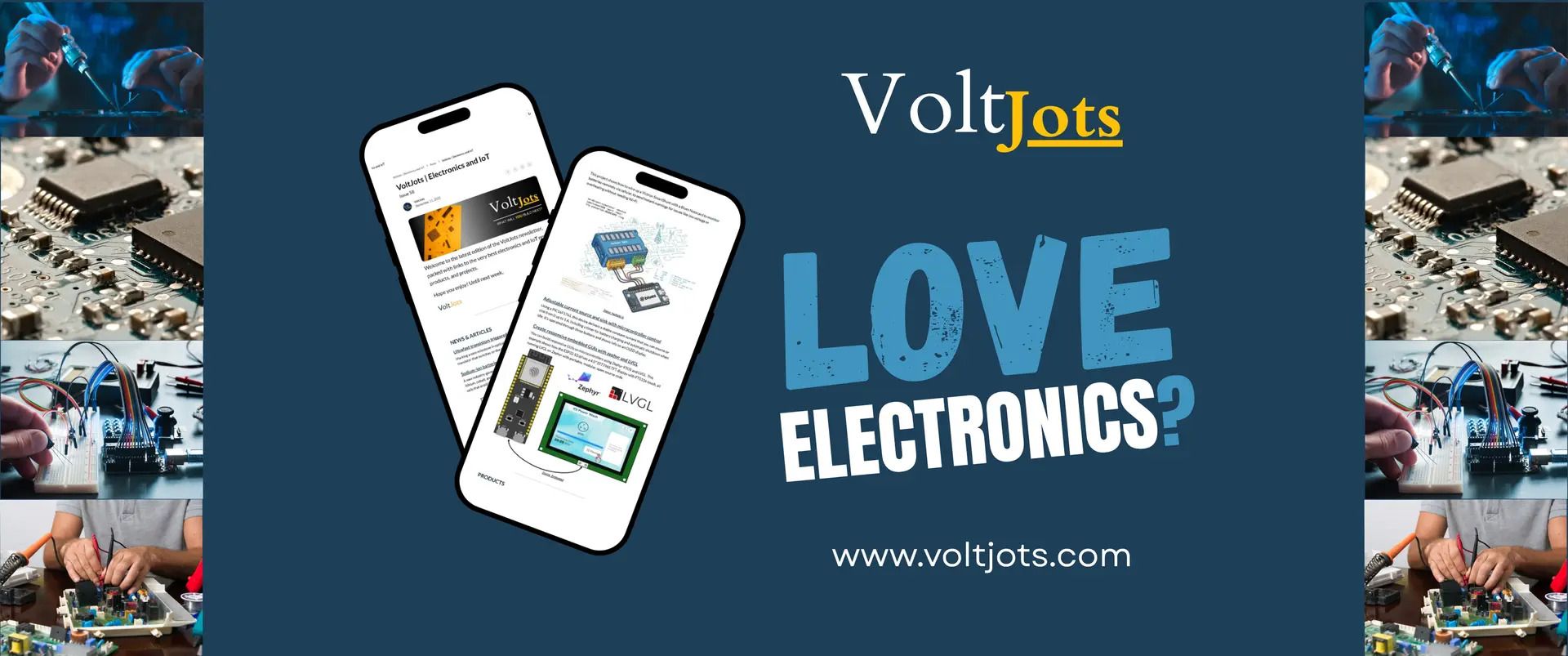- VoltJots | Electronics and IoT
- Posts
- VoltJots | Electronics and IoT
VoltJots | Electronics and IoT
Issue 68

Welcome to the latest edition of the VoltJots newsletter, linking you to the very best electronics and IoT news, products, and projects.
Hope you enjoy! Until next week,
VoltJots
NEWS & ARTICLES
Two Ph.D. students and their professor have created a 3D printing method to make tiny Delta robots, called microDeltas, overcoming decades-old challenges in building small-scale robots.
You get more RAM and performance with Raspberry Pi Pico, but Arduino’s advantage is its low-power design and beginner-friendly environment for projects.
Silicon photonics puts light on silicon chips to send data faster and more efficiently than electrons, helping AI data centres handle huge data loads with less energy.
This portable wearable detects wound stages and adjusts treatment accordingly. a-Heal combines AI and a mini camera to identify how a wound is healing and automatically provides medication or electric therapy, mimicking how a doctor would treat it.
By twisting three graphene sheets just right, MIT researchers observed a clear superconducting gap, confirming the unusual superconducting behaviour in magic-angle tri-layer graphene.
By integrating regulators, battery monitors, and protection circuits, PMICs reduce component clutter and help industrial designs reach market faster and handle tough power needs. |
PROJECTS & TUTORIALS
This project uses an ESP32 and a MAX98357A amp to play five .wav files from an SD card simultaneously, with five knobs controlling each track’s volume. It lets you craft a custom soundscape by blending nature and white noise sounds to help you sleep better.
The Arduino UNO Q merges a classic Arduino form with a microcontroller plus a Linux-running microcomputer that talk to each other!
Capture images with this AI vision assistant, which uses OpenAI to interpret photos and perform actions such as image recognition and text translation.
Using an ATtiny85 chip, a DHT22 sensor, and an SSD1306 OLED, you can create a small weather station that displays real-time temperature and humidity with just a few components.
This project shows how to use an ESP32 and an AC dimmer circuit to create a fan speed controller that works smoothly and quietly, letting you control your fan from Alexa, Google Home, a mobile app, IR remote, or manual switches.
This guide walks you through setting up the pH sensor library in Proteus, wiring the Arduino and LCD, and coding the Arduino to convert sensor voltages into pH values shown on an LCD.
This project uses the DFRobot C1001 mmWave sensor paired with a Xiao ESP32C3 microcontroller inside a custom 3D-printed case, creating a neat, modular system for detecting human presence.
PRODUCTS
The ISM6HG256X combines dual-range accelerometers and a high-range gyro with built-in machine learning, letting it monitor everything from tiny vibrations to sudden shocks in one smart sensor.
Tachyum’s new Prodigy processor uses a 2nm process to deliver massive AI performance, beating Nvidia’s top models by over 20 times and hitting more than 1,000 PFLOPs on inference.
Microchip’s LAN866x chips turn Ethernet data into simple digital signals, reducing system complexity and wiring. They run on 10BASE-T1S networks and make it easier to link car features like lighting, audio, and sensors.
Featuring an energy-efficient ESP32-C6 processor, 16 MB flash, and handy built-in sensors, Arduino’s Nesso N1 lets you build and control IoT devices with a touchscreen interface and programmable buttons, all programmable via Arduino IDE, MicroPython, or UIFlow.
E-peas’ AEM13921 is a dual-input energy harvesting PMIC with two ultra-low-power boost converters that start up from just 1.5 µW and 275 mV. Each input can handle up to 135 mA and be tuned for either MPPT or constant voltage, making it perfect if you're looking to combine photovoltaic and thermal energy sources.

Thanks for subscribing and reading. If, however, you are not a subscriber, and you would like to receive this newsletter in your inbox, then hit the subscribe button now — it’s free, and you can unsubscribe any time you like.






